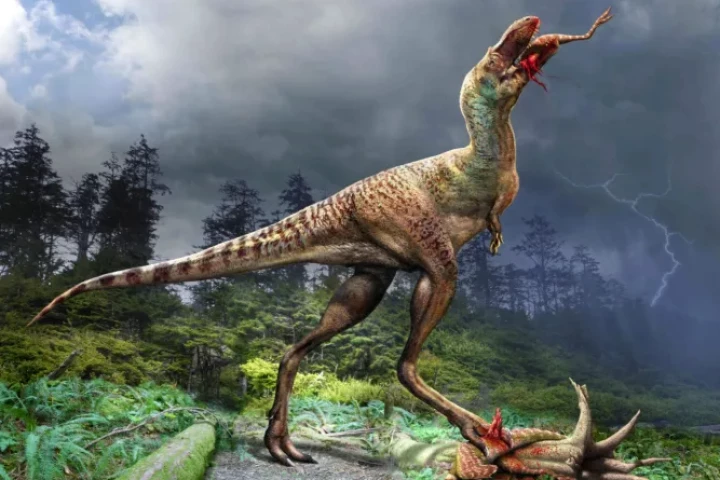University of Calgary
-
February 11 marks International Day of Women and Girls in Science. The day celebrates both the work of women across vast scientific disciplines, but also recognizes ongoing gender-based challenges. Here, we pay tribute to 11 stars of STEM today.
-
Still prized at the dinner table today, it appears the drumstick was just as popular with tyrannosaur kids 75 million years ago. A fascinating find in a dinosaur's stomach offers clues as to why these giant predators became the most successful on Earth.
-
A quantum internet would be much faster and more secure than the regular web – and now it may be one step closer to reality. Scientists have used quantum teleportation to send information over long distances, with a higher fidelity than ever before.
-
New research is describing how certain species of gut bacteria can enhance the efficacy of cancer immunotherapy. The animal study offers insights into a metabolite-immune pathway that could lead to microbial therapies incorporated into immunotherapy treatments.
-
An older relative of the famous Tyrannosaurus rex with the very cool name meaning "reaper of death" has been identified by paleontologists. Uncovered in Alberta, Thanatotheristes degrootorum lived 79 million years ago.
-
The heart is notoriously fragile, having quite a lot of difficulty in repairing itself after sustaining damage. But now, researchers from the University of Calgary have found a previously unidentified cell population in the fluid that surrounds the heart, which seems to help heal injuries.
-
Inflammatory bowel disease (IBD) isn't good for anyone to have, but it's particularly hard on children – it can cause reduced absorption of nutrients, which can in turn stunt a child's growth. That's why scientists are looking at a better way of treating it … using tapeworms.
-
The ESA's Swarm satellites have found a strange system at work in the upper atmosphere. Electrical fields created as solar winds interact with the planet’s magnetic field have been found to drive supersonic plasma jets, which can heat the ionosphere to temperatures as high as 10,000º C (18,032º F).
-
With the Poles already being affected by climate change, man-made sites in the region are under threat as ice vanishes. Because of this, a Canadian researcher is on a mission to visually record one place that could soon become just a memory.
-
Veterinary students at The University of Edinburgh now have a life-sized model of a horse sink their teeth, or, rather, arms into.
-
A team of researchers have come up with a novel take on screen sharing inspired by traditional projectors.










